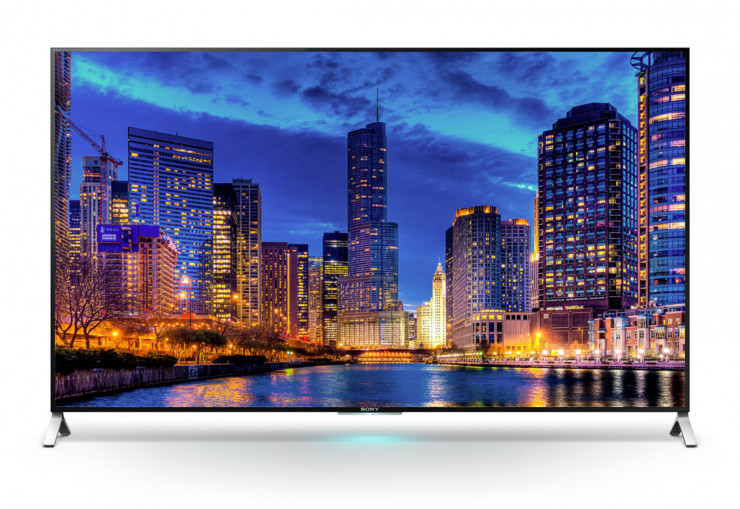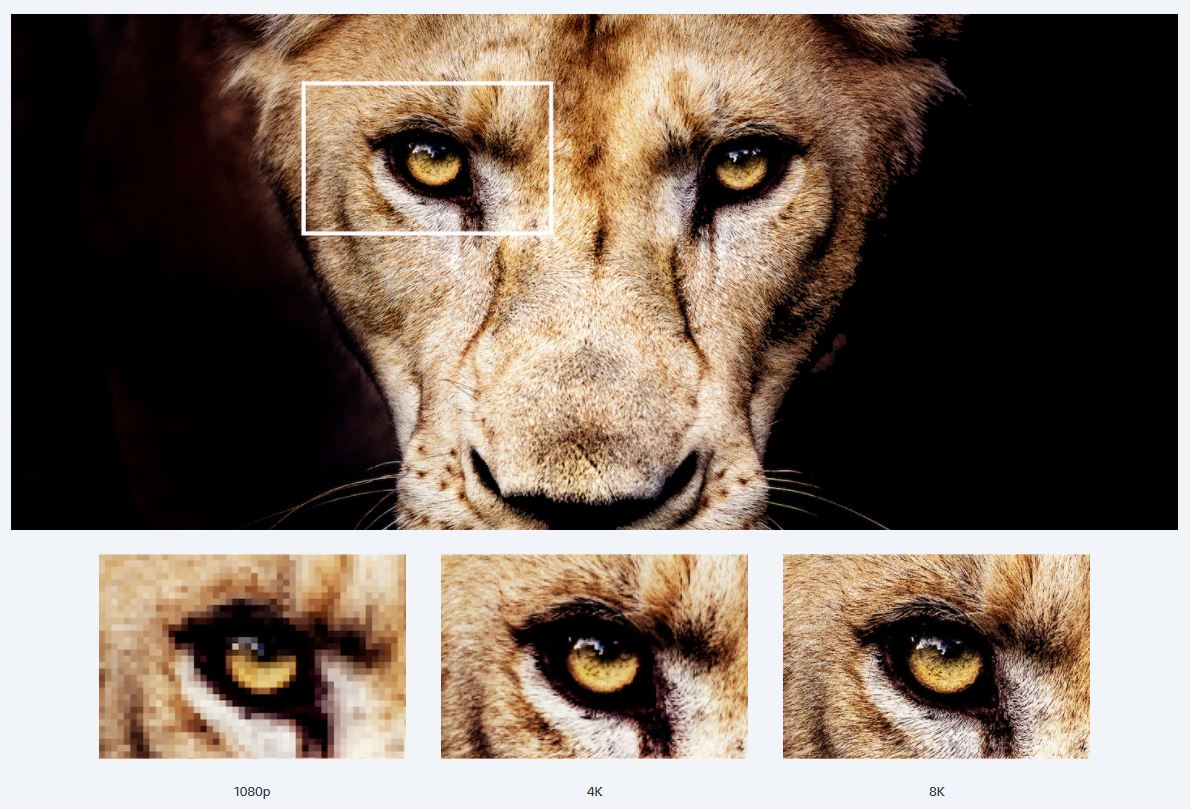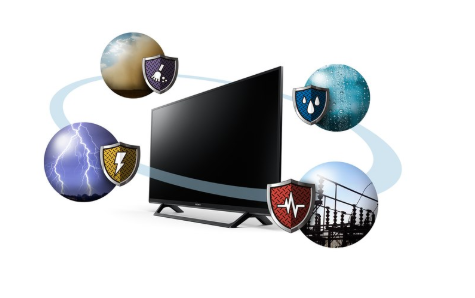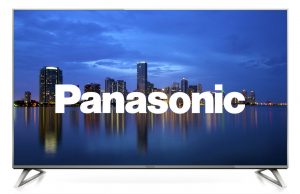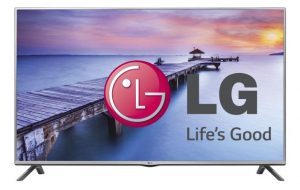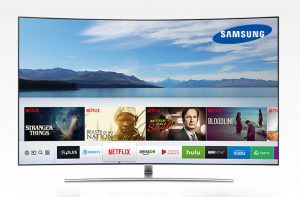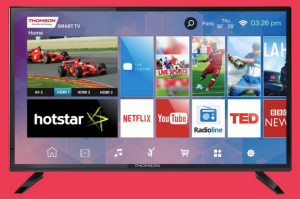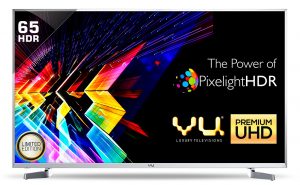Sony LED TV in India - Review 2024
- Key Sony TV Technologies
- Cognitive Intelligence with Cognitive Processor XR
- Super-rich 8K Resolution
- OLED TV by Sony
- Vibrant Triluminos Display
- Dolby Vision HDR
- Google TV OS
- Notify Bravia
- TV with a Camera!
- Acoustic Surface Technology, ClearAudio+, and Dolby Atmos
- MotionFlow XR for Blur-free Viewing
- Impeccable X-Protection Pro
- SoRPLas to Reduce Carbon Emission
- How Does Sony TV Compare to Other Brands?
- Pros and Cons of Sony TV
- Some Popular Sony models:
Sony is one of the premium TV brands. If you are looking to buy a TV consider Sony a safe bet. In terms of picture quality and sound, you can find the best models in Sony. However, Sony mostly has high-end TVs. And they are pricey. If you intend to buy a budget Sony TV with a small screen size (32 inches and lower) you will have strictly limited options.
- Key Sony TV Technologies
- Cognitive Intelligence with Cognitive Processor XR
- Super-rich 8K Resolution
- OLED TV by Sony
- Vibrant Triluminos Display
- Dolby Vision HDR
- Google TV OS
- Notify Bravia
- TV with a Camera!
- Acoustic Surface Technology, ClearAudio+, and Dolby Atmos
- MotionFlow XR for Blur-free Viewing
- Impeccable X-Protection Pro
- SoRPLas to Reduce Carbon Emission
- How Does Sony TV Compare to Other Brands?
- Pros and Cons of Sony TV
- Some Popular Sony models:
Key Sony TV Technologies
Cognitive Intelligence with Cognitive Processor XR
To counter artificial intelligence (AI) powered TVs by rivals, Sony has launched TVs with cognitive intelligence. Cognitive intelligence takes cues from how we perceive the world relying on the information coming from our senses like eyes and ears. Information from these senses is sent to the brain and processed holistically.
TVs with conventional AI can sense elements like color, saturation, contrast, brightness, etc—but on an individual level. The new premium line-up of the Sony Bravia XR series coming with Cognitive Processor XR cross-analyze these key elements—not individually—rather in a holistic manner—just like our brains do.
Besides improving the picture quality, Sony TVs coming with Cognitive Processor XR smoothly up-scales every pixel for clarity. Be it your favorite TV show or sports or your home videos, Sony’s Bravia XR series analyses and rebuilds every pixel of the picture and translates it into the higher resolution, thus enhancing its clarity.
Super-rich 8K Resolution
With budget and mid-range brands like Mi, iFFalcon, Thomson releasing TVs in 4K resolution (3840 x 2160 pixels), brands offering TVs with 8K resolution (7680 x 4320 pixels) are considered premium. Sony is one of the premium TV brands that offer 8K resolution TVs.
What makes 8K TV so elite? The answer to this question objectively lies in the resolution. TVs coming with 8K resolution have 4 times higher resolution than 4K and 16 times higher than Full HD (your usual 1080p content).
Brimming with 33 million+ pixels, Sony’s Z series 8K TVs give viewers an amazing pixel-less viewing experience. 8K resolution TVs display even the tiniest of details in every scene so that viewers don’t miss out on the nuances of the film.
However, keep in mind that 8K resolution content would hog up a lot of bandwidth. Therefore, you’ll need a very high-speed broadband connection (preferably above 100 MBPS) to watch 8K content. Moreover, in India, we don’t have channels airing in 8K resolution. Content in 8K even on YouTube and OTT platforms is strictly limited.
OLED TV by Sony
Taking cues from its arch-rival, LG, Sony has introduced OLED display in its premium 4K TV. OLED is a state-of-the-art technology that stands for Organic Light Emitting Diode which uses organic material that glows when electricity is passed through them. The main difference with organic LED as opposed to the standard one is that in organic LEDs pixel provides its own illumination whereas other TVs have LCD screens and LED for backlighting.
The ability to turn off and on individual pixels empowers OLED TVs to attain superior black levels and a wide contrast ratio compared to conventional LCD/LED TVs. Sony OLED TVs deliver commendable picture quality as pixels are turned off individually resulting in perfect blacks. Watching movies and shows with a lot of dark scenes is an absolute joy as there is no blooming around the objects in dark scenes.
But then OLEDs have one problem and that is color burn. Basically, when you watch a TV channel or content with static elements on OLED TV—for example a logo—this logo gets “burn” onto the screen. This happens when the same content with a static element is watched for hundreds of hours.
Vibrant Triluminos Display
Triluminos is another trademark Sony technology that allows for an enriched viewing experience through a wider color palette with shades closer to reality. What is special about TVs coming with Triluminos Display is their outstanding ability to reproduce blues, reds and shades of green, which most other TVs with conventional LED display struggle to display correctly.
Dolby Vision HDR
Premium Sony OLED TVs come with HDR and WCG technology.
High Dynamic Range (HDR), is a display technology in TVs to improve dynamic contrast, increase brightness, and give a wider color palette that makes the TV viewing experience life-like. So, the whites are brighter, blacks are darker and other colors more natural. HDR enhances image quality and details that are usually lost in translation in older TVs with standard display models.
Premium models like KD-65X8000H come with proprietary Dolby Vision HDR which is best standard for HDR out there. HDR that other budget brands provide is usually HDR10 which supports 10-bit color depth. But Dolby Vision support 12-bit color depth. Though this difference might not seem big, it translates profoundly when it comes to color reproduction, Dolby Vision HDR TV is capable of producing up to 68 billion colors as opposed to 1 billion colors by HDR10.
Dolby Vision has announced an improved version of Dolby Vision called Dolby Vision IQ which also takes input from TV’s ambient light sensor to implement HDR. Sadly, at the time of writing no Sony TV comes with Dolby Vision IQ HDR. Only LG and Panasonic offer Dolby Vision IQ technology in their latest line-up of premium 8K TVs.
Google TV OS
Unlike rivals Samsung and LG, which offer their own TV OS (operating system), Sony TV comes with Android operating system which is open source. The latest high-end Sony models come with Google TV OS which is a slightly tweaked version of Android TV OS. In fact, not tweaked but rather an improved version of Android. Google TV OS has a better UI (user interface) than Android with the tab-like arrangement. Older Sony models (manufactured before 2020) come with Android OS.
If you have used any Android TV you must be knowing that all Android TVs come with Google Assistant which can be accessed using a dedicated Google Assistant button on the remote. But newer models running on Google TV OS come with handsfree voice search with Google Assistant without you having to bring the remote near your mouth. So, you don’t have to dig for a remote every time you want to play something on-demand on the TV.
Notify Bravia
How many times does this happen: You put your phone on charging and switched on the TV to enjoy a Netflix show. You forget that your phone is on silent mode and miss important calls and other notifications. This is where Sony Bravia TV offers a cool feature called Notify Bravia. You just need to download the app on your smartphone and pair it with your Sony TV. And voila whenever you receive a call, SMS, or WhatsApp message, you’ll see a notification on the TV itself.
What we liked most about this app is that it gives the user the option to customize apps from which he/she would like to receive a notification. Like for example, if you only want notification for calls, you can opt for it. Furthermore, there are also privacy options on how these notifications are rendered on the TV. You can choose to just display the name of the app from which notification has arrived without any other detail or you can opt for full-fledged details like the name of the sender alongside small snippet of the message.
TV with a Camera!
Yes, you read it right. Few premium Sony TV models come with a built-in camera to record the special moments at home with family, friends, or guests. Not just the selfie or groupfie it can record video too. Premium Bravia models come with Tellybean that facilitates free full-sized video calls right from your TV. So now you can bring together your family & friends closer with this video calling app on Bravia models.
Acoustic Surface Technology, ClearAudio+, and Dolby Atmos
In most cases, sound comes directly to you from the speakers of the television. But in premium Sony models like KD-65A1 sound appears to come from the entire screen providing an immersive experience. Sony achieves this by using Acoustic Surface Technology with ClearAudio+ wherein two actuators are tactfully placed behind the TV which vibrates the screen to produce the sound that’s immersive and uniform. It is complemented further by a subwoofer which provides deeper bass.
Similarly, OLED models from Sony come with acoustic auto calibration technology that detects the position of the viewers within the room and adjusts the sound from speakers such that listeners can hear the audio clearly. Sony is one of the few brands to feature Dolby Vision and Dolby Atmos in its TV offering. Dolby Atmos delivers the experience of sound as heard in cinemas in the comfort of your home. New OLED Sony TVs come with the Voice Zoom feature which makes dialogues more clear and audible when there is background sound or music.
MotionFlow XR for Blur-free Viewing
TVs are marketed using different specs and one of the lesser-known parameters is the refresh rate. The faster the refresh rate, the clearer the perception of fast-moving objects on the screen. Sony’s MotionFlow XR creates and inserts three new transient images from the incoming signal into the original image, thereby improving display speed and clarity and allowing for sharper and smoother onscreen images. This is particularly valuable when you are watching your favorite sport live. Sony premium models like KD-65A8F come with impeccable 200 Hz (or 200 frames per second) motion flow rate which allows to observe detailing even in the fast-paced scene, otherwise lost as blur and judder.
Impeccable X-Protection Pro
Modern smart TVs by Sony come with X-Protection Pro technology that protects your TV from four failures:
- TV is designed such that there are no ventilation holes so that dust and other such particles don’t sneak inside the TV.
- It has an internal safety capacitor that would protect the TV in case of sudden power surges.
- Cables and wire that come with the TV are coated with a special anti-humid coating so that there is no chance of a short circuit due to the high moisture level.
- Finally, there is protection against lightning strikes up to 9000 volts.
So, this way you can rest assured that your TV remains protected from external anomalies like high moisture, lightning, or power fluctuations.
SoRPLas to Reduce Carbon Emission
TVs these days are getting bigger—thanks to the internet connectivity—idiot box is not transformed into a smart TV! But with bigger size, more resources (read materials) and more energy (read electricity) are required. However, Sony is one of the brands which is committed to manufacture products that are energy efficient and leave a lesser carbon footprint. To achieve this, not only Sony TVs are energy efficient but many of the TV models use SoRPlas technology to reduce carbon footprint while manufacturing TVs. SoRPlas stands for Sony Recycled Plastic.
Basically, what Sony does is collects large chunks of discarded CDs, DVDs, and optical sheets from TV panels and separate constituent material like plastic and metal. The filtered plastic is then mixed with virgin plastic. Flame-retardant material is added to this mixed plastic to ensure the material meets the requisite standard. Finally, dye is added to impart color to the plastic. This is called SoRPlas plastic which is moulded into bezels of some the Sony TVs. Using SoRPlas technology, Sony claims CO2 emission of manufacturing TV’s bezels is reduced by 77%.
How Does Sony TV Compare to Other Brands?
Sony is one of the premium brands. The brands that can be compared include Samsung, LG and Panasonic. However, Sony is the best in terms of picture quality and out-of-the-box color accuracy. Samsung gives strong competition to Sony through its Neo QLED models.
When it comes to TV OS, LG has a better user interface. But Android has its own benefits in terms of the availability of the number of apps.
Pros and Cons of Sony TV
When it comes to TVs, Sony is one of the safest TV brands due to great picture quality and brand reliability. Even though they do not have great options in the budget range, their med and high-end models are some of the best. Sony TVs have good motion handling capabilities and sharp upscaling. However, Sony TVs do not offer as good gaming features as found in Samsung or LG TVs. Furthermore, Google or Android TV OS cannot match with the fluidity of LG’s webOS 6.0.
Some Popular Sony models:
 Sony Bravia 108 cm (43 inches) 4K Ultra HD Smart LED Google TV KD-43X74K (Black)
Sony Bravia 108 cm (43 inches) 4K Ultra HD Smart LED Google TV KD-43X74K (Black)
 Sony Bravia 139 cm (55 inches) 4K Ultra HD Smart LED Google TV KD-55X74K (Black)
Sony Bravia 139 cm (55 inches) 4K Ultra HD Smart LED Google TV KD-55X74K (Black)
 Sony Bravia 164 cm (65 inches) 4K Ultra HD Smart LED Google TV KD-65X74K (Black)
Sony Bravia 164 cm (65 inches) 4K Ultra HD Smart LED Google TV KD-65X74K (Black)
 Sony Bravia 108 cm (43 inches) 4K Ultra HD Smart LED Google TV KD-43X75K (Black) (2022 Model) | with Alexa Compatibility
Sony Bravia 108 cm (43 inches) 4K Ultra HD Smart LED Google TV KD-43X75K (Black) (2022 Model) | with Alexa Compatibility
 Sony Bravia 139 cm (55 inches) 4K Ultra HD Smart LED Google TV KD-55X75K (Black) (2022 Model) | with Alexa Compatibility
Sony Bravia 139 cm (55 inches) 4K Ultra HD Smart LED Google TV KD-55X75K (Black) (2022 Model) | with Alexa Compatibility
 Sony Bravia 80 cm (32 inches) HD Ready Smart LED Google TV KD-32W820K (Black) (2022 Model) | with Alexa Compatibility
Sony Bravia 80 cm (32 inches) HD Ready Smart LED Google TV KD-32W820K (Black) (2022 Model) | with Alexa Compatibility
About the Author:
Hussain Kanchwala is an Electronics Engineer from University of Mumbai. As an Analyst at BijliBachao he keeps a tab on latest technologies in gadgets and appliances, tracks businesses of white goods companies and monitors the consumer behavior. With a background in engineering, penchant for detail, and flair for writing he regularly write reviews about brands and their products. More from this author.

